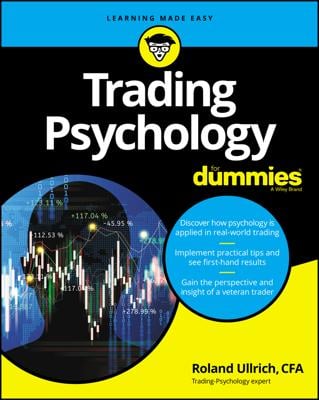The stock and commodities markets are more efficient at matching supply and demand than almost any other market. Despite the efficiency underlying trading, the markets are also dominated by human emotion and psychology.
From the same information buyers and sellers can reach different conclusions, so the trader needs to know why someone would be on the other side of the trade?
The other person may have a different time horizon. For example, long-term investors may sell on bad news that changes a security’s outlook. A short-term trader may not care about the long-term outlook, if the selling in the morning is overdone, creating an opportunity to buy now and sell at a higher price in the afternoon.
The other person may have a different risk profile. A conservative investor may not want to own shares in a company that’s being acquired by a high-flying technology company. That investor will sell, and someone with more interest in growth will buy.
The other person may be engaging in wishful thinking, acting out of fear, or trading from sheer greed. He or she may not be thinking rationally about what is happening, creating an opportunity for you.
You may be engaging in wishful thinking, acting out of fear, or trading from sheer greed. You may be the irrational trader, making mistakes that cost you. Hey, it happens to the best of us sometimes, but the more aware you are of your emotional tendencies, the better you can trade past them.
It’s highly unlikely that you are smarter than everyone else trading, but you may be more rational and disciplined. And if you happen to be both disciplined and smart, you may do very well.
Stock buying psychology
Every market participant has his or her own set of reasons and rationales for placing an order today. Although many reasons to sell exist — to pay taxes, generate cash for college tuition, or meet a pension obligation, among many others — there’s only one reason to buy: You think the security is going up in price.
For that reason alone, traders often pay more attention to what is happening to buy orders than to sell orders. To get a sense of who is projecting a profit, traders look at the number of buy orders coming in, how large they are, and at what price.
Because there are so many good reasons to sell but only one good reason to buy, the market can take a long time to recognize bearish (pessimistic) sentiment indicators. Even if you see that prices should start to go down in the near future, you have to consider that the market today can be very different from what you see coming up. And as a day trader, you only have today.
Stay objective on the market
You can see what you want to see in some price charts. And if you thought a little about fundamental analysis, you may have seen that interpreting information the way you want to is just as easy. Instead of looking objectively at what the market is telling them, some traders see what they want to see. That’s one reason knowing your system and using your limits are so important.
The best traders are able to figure out the psychology of the market almost by instinct. They can’t necessarily explain what they do — which makes it hard for those trying to learn from them.
But they can tell you this much: If you can rationally determine why the person on the other side of the trade is trading, you can be in a better position to make money and avoid the big mistakes brought on by hope, fear, and greed.

